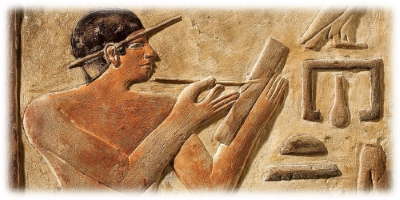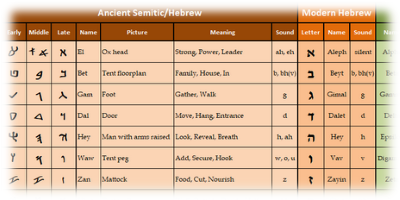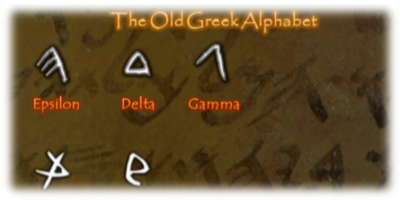Eikongrammatology is a combination of three Greek words. Eikon means “image” or “picture” and is the origin of our English word icon. Grammaton means “letters” and is the same word used in tetragrammaton, which consists of the Greek word tetra, meaning “four,” and grammaton, meaning “letters,” in reference to the “four letters” in the name of God—YHWH. The last word is -ology, meaning “the study of.” Eikongrammatology is the study of picture letters.
Over the years, there has been an increase in this type of study, which began with the late Dr. Frank Seekins’ book Hebrew Word Pictures. In the mid-90s, A friend of mine and I were studying Dr. Seekins’ book, and after reviewing his examples, we decided to try a few of our own. The first word we tried was Adam, which in Hebrew is spelled aleph, dalet, mem. We were amazed to find that these letters, based on their pictorial meanings, could be interpreted as “first to enter chaos.” Then we tried satan, which, based on the pictures, meant “the thorn that surrounds the seed.”
In those early days of the internet, there was no "Ancient Hebrew" presence on the internet, so, in 1999, my wife and I began the Ancient Hebrew Research Center with the express goal of sharing the Ancient Hebrew alphabet and language with others. With no Ancient Hebrew font available at that time, I used a font designer program to create the Early Semitic Font to represent the pictographs of this ancient script.

The Early Semitic Font
Over the years, while working on my lexicon, Benner’s Lexicon of Biblical Hebrew, I continued to work with the pictographs and formulated a few, what I guess you could loosely call, “rules” when applying eikongrammatology in your studies:
- The two-letter parent roots appear to be the most ancient of Hebrew words and are the most reliable for interpretation from the pictographs.
- The three-letter child roots are treated the same as their parent roots; the vowel added to the parent to form the child is not counted in the pictographic interpretation.
- The three-letter adopted roots may be interpreted in two ways: either each letter individually, or by identifying the original parent root within them (two letters) with meaning derived from the pictographs, while the third letter is considered an addition to the parent root.
- Interpretations derived from the pictographs cannot contradict the definition of the word.
- Because these interpretations can be suggestive, due to the multiple meanings of each letter, they should be considered informative, but not conclusive.
- Words derived from the above roots may include added letters; while interesting interpretations can be found in these words, the added letters should not be counted in the core interpretation, except for educational purposes.
Something of interest to note is that this article includes the first documented use of the term eikongrammatology.
Like what you’re discovering? Continue the journey from Bible reader to translator.
|







